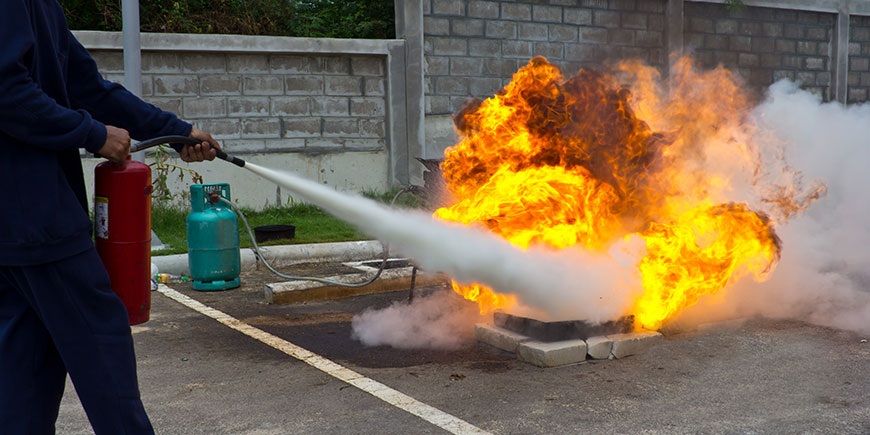
Workplace fires are one of the most serious hazards that businesses can face. Whether caused by faulty equipment, electrical faults, flammable materials, or human error, a fire can lead to severe injuries, loss of life, and significant property damage. That’s why understanding the importance of essential fire safety training in the workplace is critical for every organization, regardless of size or industry.
Why Workplace Fire Safety Matters
Workplace fire safety is not just about reacting to emergencies—it’s about preventing them. Fires can disrupt operations for days, weeks, or even permanently shut down a business. By investing in fire safety training, employers can:
Reduce the risk of fire-related accidents.
Ensure employees know how to act during emergencies.
Comply with legal health and safety requirements.
Safeguard both human lives and company assets.
When employees are properly trained, they can take the right steps within seconds—those seconds can mean the difference between a minor incident and a catastrophe.
Goals of Fire Safety Training
A well-structured fire safety training program aims to:
Educate staff about potential fire hazards in their work environment.
Teach proper use of firefighting equipment such as fire extinguishers.
Familiarize employees with emergency evacuation plans.
Encourage proactive reporting of safety hazards.
Key Topics Covered in Workplace Fire Safety Training
While training content varies by industry, the following topics are commonly included:
Fire prevention measures – Safe storage of flammable items, electrical safety, and housekeeping.
Types of fires – Understanding Class A, B, C, D, and K fires and the appropriate extinguishers for each.
Evacuation procedures – Safe exit routes, assembly points, and headcounts.
Practical fire drills – Simulated exercises to prepare employees for real emergencies.
Legal requirements – Employer and employee responsibilities under workplace safety laws.
Benefits of Fire Safety Training for Employees
Employees are the first line of defense in any fire situation. Fire safety course provides them with:
Awareness – Ability to identify and prevent hazards before they escalate.
Confidence – Knowing exactly what to do reduces panic during emergencies.
Preparedness – Quick and effective decision-making in life-threatening situations.
Benefits of Fire Safety Training for Employers
For organizations, workplace fire safety brings measurable returns:
Lower insurance premiums due to reduced risk.
Minimized downtime after incidents.
Improved compliance with fire regulations.
Enhanced company reputation for prioritizing employee safety.
Legal Importance of Fire Safety in the Workplace
In many countries, fire safety certification is a legal requirement. Employers must:
Conduct regular fire risk assessments.
Provide accessible firefighting equipment.
Train employees and conduct fire drills regularly.
Keep evacuation routes clear and updated.
Non-compliance can result in heavy fines, legal action, and even business closure.
How Often Should Fire Safety Training Be Conducted?
The importance of fire safety training grows when it’s consistent. Recommended frequency:
Initial training for all new employees.
Refresher courses annually or bi-annually.
Special sessions after workplace changes or incidents.
Detailed Comparison: Benefits of Fire Safety Training for Employees vs Employers
| Aspect | Benefits for Employees | Benefits for Employers |
|---|---|---|
| Safety Awareness | Learn to recognize hazards before they escalate. | Creates a safer work environment, reducing accident rates. |
| Emergency Response | Gain confidence to act quickly during emergencies. | Ensures swift action to minimize damage and injuries. |
| Legal Compliance | Understand individual responsibilities under safety laws. | Avoids penalties and ensures regulatory compliance. |
| Use of Equipment | Learn correct use of extinguishers and PPE. | Protects assets and reduces repair costs after incidents. |
| Team Coordination | Build trust and cooperation during emergencies. | Improves evacuation efficiency and communication. |
| Peace of Mind | Feel secure knowing the workplace prioritizes safety. | Enhances company reputation and employee retention. |

Integrating Fire Safety into Workplace Culture
Encourage proactive hazard reporting – Create a simple and non-punitive system for employees to report fire hazards, faulty equipment, or unsafe practices. This builds ownership of safety responsibilities across the team.
Conduct surprise fire drills regularly – Instead of only planned drills, introduce occasional unannounced drills to evaluate genuine readiness. This helps identify gaps in evacuation procedures and improves reaction times.
Recognize and reward safe behavior – Publicly appreciate employees who demonstrate strong safety practices, such as properly using fire extinguishers or keeping exits clear. Incentives can range from verbal acknowledgment to small rewards.
Include fire safety topics in all staff meetings – Dedicate a few minutes in each meeting to discuss recent safety observations, share fire prevention tips, or review emergency protocols. This keeps fire safety a constant priority.
Promote continuous fire safety awareness – Use workplace posters, safety emails, and monthly refresher talks to ensure employees never become complacent about fire risks.
Conclusion
The importance of fire safety training in the workplace cannot be overstated. It not only saves lives but also protects valuable assets, reduces costly downtime, and ensures full compliance with workplace safety laws. When fire safety is treated as a core priority, businesses can prevent potential disasters, maintain operational continuity, and create a culture where employees feel safe, valued, and confident in their environment. Partnering with the best safety institute ensures that your workforce receives top-quality, practical training tailored to your industry’s needs. This investment isn’t just a compliance measure—it’s a long-term safeguard that strengthens your people, your operations, and your reputation.








